Alex Bledsoe: Fantasy Noir
 Alex Bledsoe was born in Tennessee, and grew up an hour north of Memphis. He studied journalism at the University of Tennessee from 1981-85, and went on to write for newspapers, work as a professional photographer, and do legal copyediting until becoming a full-time fiction writer.Bledsoe has published numerous short stories in various zines, starting in the late ’90s. His series of hardboiled fantasies featuring sarcastic ‘‘sword jockey’’ Eddie LaCrosse began with The Sword-Edged Blonde (2007) and continues with Burn Me Deadly (2009) and Dark Jenny (2010). His 1970s vampire tale Blood Groove appeared in 2008, followed by sequel The Girls With Games of Blood (2009). Standalone fantasy The Hum and the Shiver is coming in 2011.
Alex Bledsoe was born in Tennessee, and grew up an hour north of Memphis. He studied journalism at the University of Tennessee from 1981-85, and went on to write for newspapers, work as a professional photographer, and do legal copyediting until becoming a full-time fiction writer.Bledsoe has published numerous short stories in various zines, starting in the late ’90s. His series of hardboiled fantasies featuring sarcastic ‘‘sword jockey’’ Eddie LaCrosse began with The Sword-Edged Blonde (2007) and continues with Burn Me Deadly (2009) and Dark Jenny (2010). His 1970s vampire tale Blood Groove appeared in 2008, followed by sequel The Girls With Games of Blood (2009). Standalone fantasy The Hum and the Shiver is coming in 2011.
Bledsoe lives in Wisconsin with his wife and children.
Website: Alex Bledsoe | Author
 “When I was a kid and a teenager, I read a lot of science fiction – a lot of Asimov, a lot of Roger Zelazny (I loved Damnation Alley). Then at some point, around the time I graduated from high school and I was in serious danger of going too far into geekdom to ever come out, I discovered the album Darkness on the Edge of Town by Bruce Springsteen. This sounds kind of cheesy, but it drew me back to the world around me. It’s not that I lost affection for the geeky stuff, but that album showed me you can make really cool stuff out of the world around you (which is an idea I had never really considered).”From that point, I bounced between reading hardboiled detective stories, which I took as kind of analogous to the Springsteen music, and science fiction. As I got older, the ratio tilted more toward the noir. I discovered Robert B. Parker (who is still one of my favorite authors ever), Dashiell Hammett, and people like that. They spoke to me with an immediacy I didn’t get from fantasy and science fiction – though I don’t think that’s as true now as it used to be.”
“When I was a kid and a teenager, I read a lot of science fiction – a lot of Asimov, a lot of Roger Zelazny (I loved Damnation Alley). Then at some point, around the time I graduated from high school and I was in serious danger of going too far into geekdom to ever come out, I discovered the album Darkness on the Edge of Town by Bruce Springsteen. This sounds kind of cheesy, but it drew me back to the world around me. It’s not that I lost affection for the geeky stuff, but that album showed me you can make really cool stuff out of the world around you (which is an idea I had never really considered).”From that point, I bounced between reading hardboiled detective stories, which I took as kind of analogous to the Springsteen music, and science fiction. As I got older, the ratio tilted more toward the noir. I discovered Robert B. Parker (who is still one of my favorite authors ever), Dashiell Hammett, and people like that. They spoke to me with an immediacy I didn’t get from fantasy and science fiction – though I don’t think that’s as true now as it used to be.”
…
“The reason I picked 1975 as the setting for Blood Groove and The Girls With Games of Blood was that I wanted it to be pre-Anne Rice, and Interview with the Vampire came out in ’76. One aspect of the story (particularly in Blood Groove) is the fact that several of the vampires only know what they’re capable of from movies and TV. Once Anne Rice came on the scene, vampires became sort of self-reflective, self-aware: they knew they were vampires. I didn’t want that – I wanted them to be the kind of pure vampires that I grew up enjoying.
“The original draft was set in a nameless city, not a specific time or place, very generic. But in 1975 I was a kid at home north of Memphis and I knew Memphis as a city, so moving it there was not that big a change. Memphis is a very specific city, with a lot of great history to work with, a good setting for something, and it hasn’t been used a lot in genre. And when I started revising with that in mind, the novel really came alive for me: aspects of the story that I hadn’t thought about before. It’s the details that bring that stuff alive. You’re never going to make people truly believe in vampires, but because you’re describing the weather, the architecture, the traffic, and the attitudes that people know are real, it makes suspending their disbelief about one impossible thing that much easier.”
…
 “This fall, I have a whole new thing coming out called The Hum and the Shiver, about a race of people descended from Irish fairies who live in Appalachia and play country music. Depending on the response, that may or may not start a series, but it’s very different from the other two series. I don’t know if there’s going to be a third vampire novel. I would like to do one more, because I know what the story is and I would like to kind of wrap things up.
“This fall, I have a whole new thing coming out called The Hum and the Shiver, about a race of people descended from Irish fairies who live in Appalachia and play country music. Depending on the response, that may or may not start a series, but it’s very different from the other two series. I don’t know if there’s going to be a third vampire novel. I would like to do one more, because I know what the story is and I would like to kind of wrap things up.
“I’m really tired of the wink-nudge irony that pervades so many vampire stories. I would rather err on the side of sincerity. If it means sacrificing a joke, I’ll go with that. That whole postmodern school of, ‘Oh, we’re vampires but we’ve seen all the vampire movies and we’re gonna be vampires hiding in plain sight, pretending to be vampires’ – I think that’s going to wear thin after a while. I don’t think it will age well.”
…
“As a writer, I think your first job is always to be entertaining. If you can’t entertain people, you shouldn’t be doing this. I’m aware of a moral dimension to the stuff I write and I don’t work against that; I accept it, particularly in the Eddie LaCrosse books. Eddie has a very strong moral sense as a character, and a moral dimension to the story grows out of that. But when I’m first writing, I don’t worry about that. As I’m revising, that’s where the themes come in, where you get a sense of what the story’s actually about.”


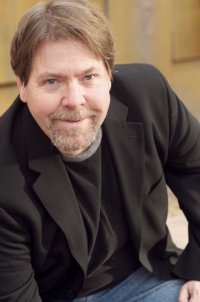
 Excerpts from the interview:
Excerpts from the interview: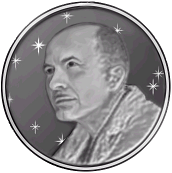
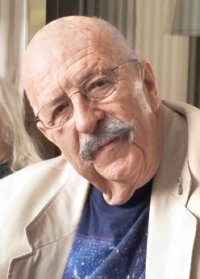
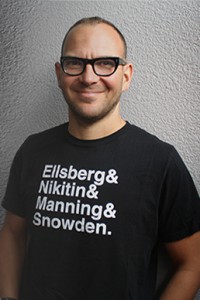
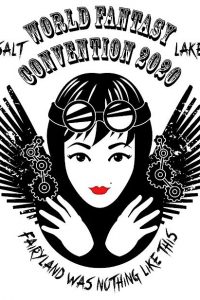

Pingback:Locus Online Monitor » New Books, 27 September